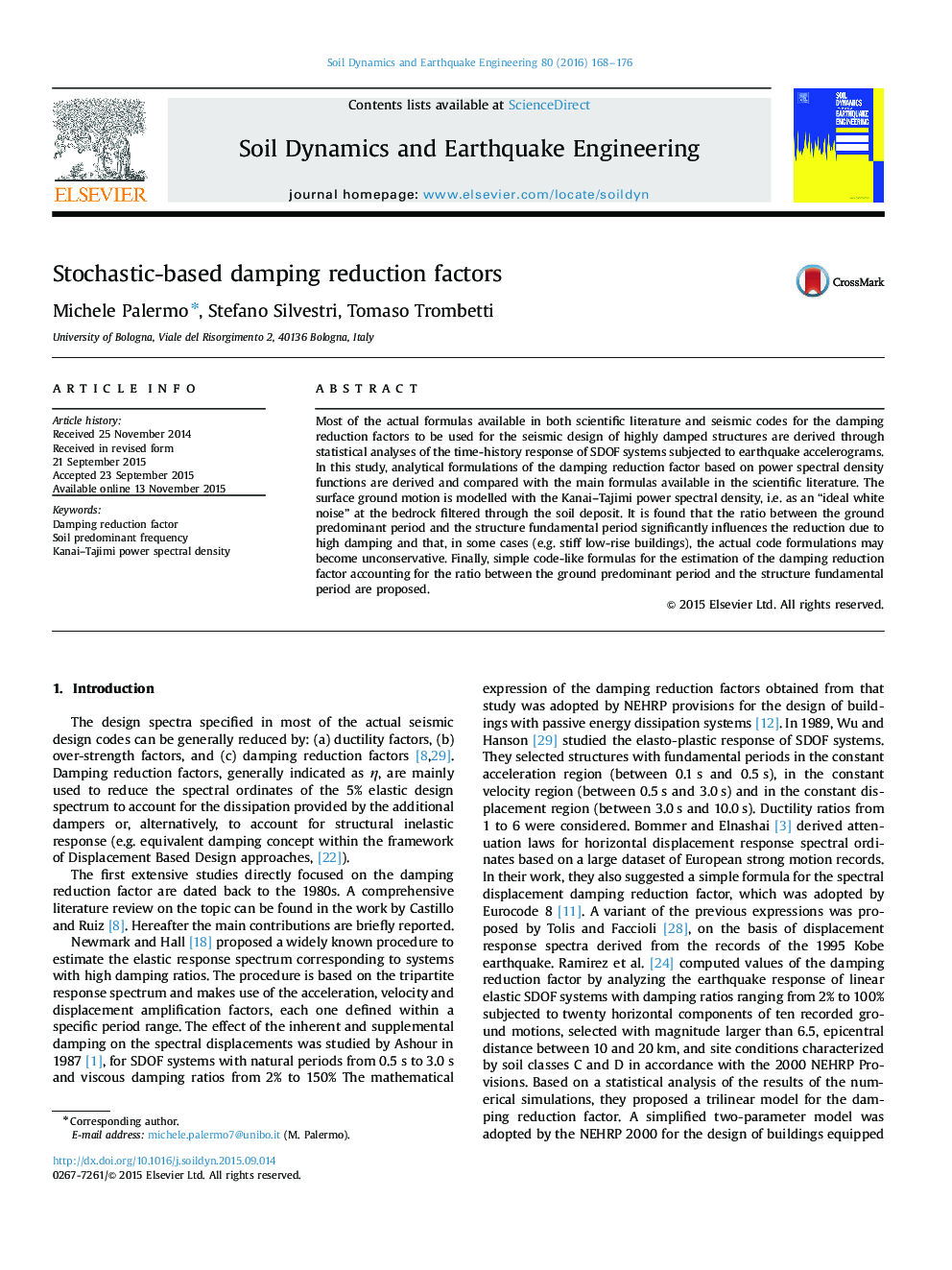| Article ID | Journal | Published Year | Pages | File Type |
|---|---|---|---|---|
| 6771773 | Soil Dynamics and Earthquake Engineering | 2016 | 9 Pages |
Abstract
Most of the actual formulas available in both scientific literature and seismic codes for the damping reduction factors to be used for the seismic design of highly damped structures are derived through statistical analyses of the time-history response of SDOF systems subjected to earthquake accelerograms. In this study, analytical formulations of the damping reduction factor based on power spectral density functions are derived and compared with the main formulas available in the scientific literature. The surface ground motion is modelled with the Kanai-Tajimi power spectral density, i.e. as an “ideal white noise” at the bedrock filtered through the soil deposit. It is found that the ratio between the ground predominant period and the structure fundamental period significantly influences the reduction due to high damping and that, in some cases (e.g. stiff low-rise buildings), the actual code formulations may become unconservative. Finally, simple code-like formulas for the estimation of the damping reduction factor accounting for the ratio between the ground predominant period and the structure fundamental period are proposed.
Related Topics
Physical Sciences and Engineering
Earth and Planetary Sciences
Geotechnical Engineering and Engineering Geology
Authors
Michele Palermo, Stefano Silvestri, Tomaso Trombetti,
